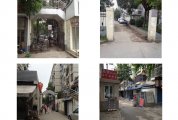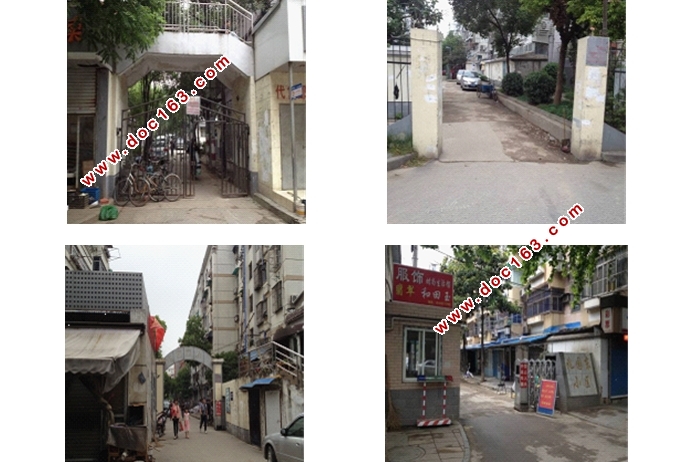老小区交通设计评估

老小区交通设计评估(任务书,开题报告,论文16100字)
摘要
交通影响分析(TIA)的目的是通过评价和分析土地开发、改造、土地使用性质变更以及重大项目建成后所产生的新增交通需求对周围交通环境产生的影响,来确定对策以减小项目建设所带来的负面影响,缓解建设项目产生的交通量对周边道路的交通压力。利用交通规划和交通工程学的理论和方法,对改造前后的兆园小区进行现状分析、交通需求预测和交通组织设计,使项目对周边交通影响符合交通影响分析评价相关标准,出入口设置和停车设施配置符合各项要求,各种交通组织畅通、安全、并体现以人为本的原则。
关键词:老小区交通改造 交通组织评价 交通影响预测
Abstract
The purpose of is through the evaluation and analysis of land development , transformation,nature change of and impact on the surrondings traffic by the new traffic demand generated by the completion of major projects.Determine the measures to reduce the negative effect brought by the project construction, and alleviated the traffic pressure on the surroundings generated by construction project.Using the theory and method of “Traffic Planning” and “Traffic Engineering” to carry out the analysis of Zhaoyuan,traffic demand prediction and traffic organization design ,to make the impact on the surrondings up to the standards of and evaluation,and gateway settings and configuration of parking facilities in accordance with the requirements,traffic organization become smooth,safe,and embody the people-oriented principle.
[资料来源:http://Doc163.com]
Key words: Transformation of the old district transportation;Traffic Organization Evaluation;Traffic impact prediction
[资料来源:http://www.doc163.com]

目 录
摘要 I
ABSTRACT II
第一章 工程概况 1
1.1项目概述 1
1.1.1项目位置 1
1.1.2项目周边设施情况 2
1.2 现有交通状况 2
1.2.1 出入口情况 2
1.2.2停车设施现状 4
第二章 改造方案 5
2.1 停车设施改造情况 5
2.2 出入口改造设计 6
第三章 评价方法简介 7
3.1 运用TRANSCAD及TRANSTAR宏观分析软件 7
3.1.1 TransCAD 7
3.1.2 交运之星—TranStar 8
3.2 局部地点单独分析 9 [资料来源:www.doc163.com]
3.3 局部仿真分析 9
第四章 针对局部单独分析 10
4.1小区内部路段 10
4.1.1 小区内路段分析 10
4.2小区外围路段 13
4.2.1 研究区域范围 13
4.2.2影响地区交通要道 13
4.2.3现状道路情况 13
4.2.4道路交通分析评价 14
4.2.5现状交通量和负荷度调查 14
4.3出入口设置 15
4.4交叉口交通分析 16
4.4.1小区外围交叉口主要节点情况 16
4.4.2现状道路及节点图 16
4.4.3小区内部主要交叉点情况 18
4.5研究区域现状公共交通设施情况 20
4.5.1 公交线路现状 20
4.5.2现状公共交通存在问题分析 21
4.5.3 周边公交线路规划和改善措施 21
4.5.4公交场站设施规划 21
4.6 停车行人设施规划 21
4.6.1 停车需求供给规划分析 21
4.6.2 研究范围内行人设施规划 22
第五章 项目交通预测 23
5.1 预测方法及步骤 23
5.1.1 交通预测方法及步骤 23
5.1.2 项目预测年限 24
5.2 背景交通量预测 24
5.2.1 过境交通量预测 24
5.2.2 非项目交通量预测 24
5.3 项目交通生成预测 25
5.3.1 交通生成率指标及来源 25
5.3.2 项目交通生成量预测 25
5.4 出行方式划分 26
5.5 交通分布 27
5.5.1 交通分布方法 27
5.5.2 交通分布依据 27
5.5.3 交通分布结果 27
5.6 交通分配 28
5.6.1 背景交通运行情况分析 28
5.6.3 小区交通运行情况分析 29
5.7 公共交通需求预测 30
[资料来源:http://www.doc163.com]
5.8 停车需求预测 30
5.8.1 机动车停车需求预测 30
第六章 项目配套设施评价 31
6.1消防车交通组织 31
6.2停车 31
6.3 公共交通组织 32
6.4 行人或自行车设施 32
6.5 行人设施交通影响分析评价 32
6.6 内外部交通组织交通影响分析评价 32
第七章 改善建议 33
7.1 改善方案 33
7.2 实施可行性分析 33
第八章 总结 34
参考文献 35
致 谢 36
[资料来源:http://www.doc163.com]
